
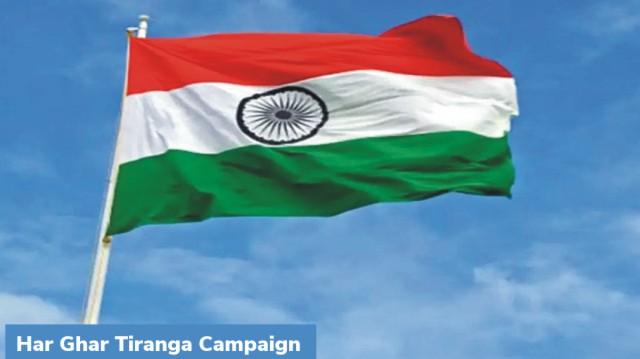
This August 15 we will complete 75 years of our freedom from British rule. This is a time to introspect and commit ourselves to the movement which got us freedom and to assess whether we are walking the path of the dreams of the visionaries of the freedom movement.
The government led by Prime Minister Narendra Modi has urged the people to participate in hoisting India’s flag, the Tiranga (Tricolour), on their houses between August 13 and 15.
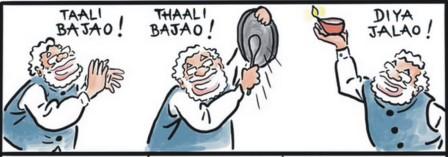 It looks like another spectacle is being brought up on the lines of ‘taali’ (clap) and ‘thali’ (utensil) during the Covid-19 epidemic.
It looks like another spectacle is being brought up on the lines of ‘taali’ (clap) and ‘thali’ (utensil) during the Covid-19 epidemic.
We as a country have derived the deepest of inspirations from Tiranga hoisting on our national days and on occasions when we have something to celebrate. Every August 15 and January 26, the same thing is done to remind ourselves of the deeper spirit of the national flag and to rededicate ourselves to the goals of the republic.
Why is it being done now as we celebrate the 75th year of independence?
On one hand it is a welcome move, at another level this is also the time when the spirit of our constitution is being trampled recklessly by targeting religious minorities, Dalits and women.
This is the time when our hunger index is competing with Nigeria’s. Unemployment and the inability to face regularly occurring natural disasters like floods are the order of the day.
Curbing democracy
This is also the time when we are disturbed that so many social workers, raising their voice for the poor and marginalized, are put behind the bars for their struggle to uphold the values of the constitution and to come to the aid of the victims of violence.
The arrests of Teesta Setalvad and R.B. Srikumar and putting fresh charges against Sanjeev Bhat is just the tip of the iceberg of the type of politics underway in the society.
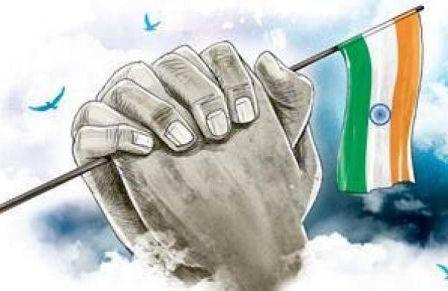 So while all the political moves are at cross purposes with the values which our Tiranga represents, what is the purpose of creating this spectacle? We also understand that though the BJP-RSS is presently projecting the Tiranga, it is deeply opposed to the values which it represents.
So while all the political moves are at cross purposes with the values which our Tiranga represents, what is the purpose of creating this spectacle? We also understand that though the BJP-RSS is presently projecting the Tiranga, it is deeply opposed to the values which it represents.
During the national movement, the anti-British movement had the Tiranga as its symbol. The RSS, the parent organization of the BJP, not only kept aloof from the movement but it did not accept the Tiranga. It has a saffron flag for itself.
When Jawaharlal Nehru became the Congress President in 1929 and the Congress gave a call to celebrate January 26, 1930 by hoisting the Tiranga, RSS opposed it and instructed its cadres to hoist the saffron flag instead.
Golwalkar on flag
The Tiranga was adopted as the national flag with a modification: the Charkha (the spinning wheel of Mahatma Gandhi) was replaced by Ashok Chakra.
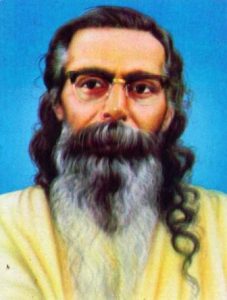
Then RSS chief M.S. Golwalkar commented: “Our leaders have set up a new flag for our country. Why did they do so? It is just a case of drifting and imitating….Ours is an ancient and great nation with a glorious past. Then, had we not had a flag of our own? Had we not national emblem at all these thousands of years? Undoubtedly we had.”
And he told a Gurupurnima gathering in Nagpur on July 14, 1946 that the saffron flag in totality represented the great Indian culture. “We firmly believe that in the end the whole nation will bow before this saffron flag.”
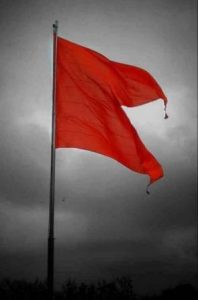 As India got independence, the RSS mouthpiece Organizer was scathing in criticizing the Tiranga. The August 14 issue demanded that the saffron flag be hoisted at the ramparts of the Red Fort in Delhi.
As India got independence, the RSS mouthpiece Organizer was scathing in criticizing the Tiranga. The August 14 issue demanded that the saffron flag be hoisted at the ramparts of the Red Fort in Delhi.
“The people who have come to power by the kick of fate may give in our hands the tricolour but it will never be respected and owned by Hindus. The word three is in itself an evil, and a flag having three colours will certainly produce a very bad psychological effect and is injurious to a country.”
The BJP is a dynamic organization. It did strategize the use of the Tiranga in due course. One recalls the party leader Uma Bharati using the Tiranga to communalize the Idgah Maidan issue in Karnataka.
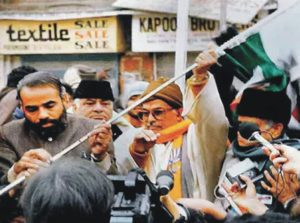
Later, when Murli Manohar Joshi became the BJP president, he took out an ‘Ekta Yatra’ to Kashmir and hoisted the Tiranga in Srinagar under the protection of the Indian Army.
In due course, the so-called fringe elements of this politics started taking out processions through Muslim majority areas while waving the Tiranga in an intimidating way.
Pride or symbolism?
The present campaign planned for August 13-15 comes with a modified norm that the national flag need not be just made of Khadi, or homespun cotton popularised by Mahatma Gandhi. So, now polyester and other synthetic material will be used in abundance with adverse consequences to the environment. Can patriotism be generated by such moves?
Mere symbols don’t bring the substance unless values of Fraternity, Equality and Liberty are followed. These need to be highlighted while initiating any genuine campaign. ![]()
____________
Also Read:
Centre’s Opaque Auction Rules For Pulses Rip Off Govt Coffers, Help Millers Strike Rich
Need to amend laws like UAPA to provide for punishment for those who slap false cases
Global Arms Trade: Who are the real winners?
Why not 40 pc tickets for women in Punjab and elsewhere?
Punjab – How a deadly cocktail of Agri-Water-Energy nexus going to destroy it?
North Pole and the ideological conflict of RSS & Hindutva
Politics of Symbolism: Dalit Chief Ministers in India

Disclaimer : PunjabTodayTV.com and other platforms of the Punjab Today group strive to include views and opinions from across the entire spectrum, but by no means do we agree with everything we publish. Our efforts and editorial choices consistently underscore our authors’ right to the freedom of speech. However, it should be clear to all readers that individual authors are responsible for the information, ideas or opinions in their articles, and very often, these do not reflect the views of PunjabTodayTV.com or other platforms of the group. Punjab Today does not assume any responsibility or liability for the views of authors whose work appears here.
Punjab Today believes in serious, engaging, narrative journalism at a time when mainstream media houses seem to have given up on long-form writing and news television has blurred or altogether erased the lines between news and slapstick entertainment. We at Punjab Today believe that readers such as yourself appreciate cerebral journalism, and would like you to hold us against the best international industry standards. Brickbats are welcome even more than bouquets, though an occasional pat on the back is always encouraging. Good journalism can be a lifeline in these uncertain times worldwide. You can support us in myriad ways. To begin with, by spreading word about us and forwarding this reportage. Stay engaged.
— Team PT


Copyright © Punjab Today TV : All right Reserve 2016 - 2024 |